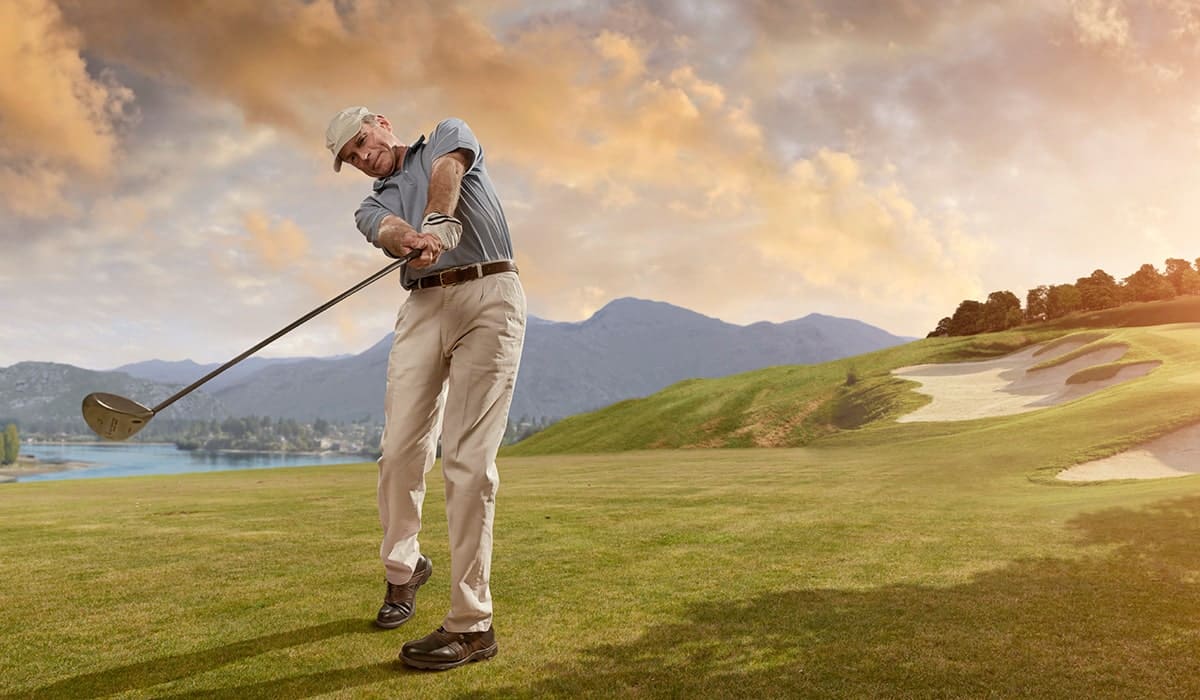The most common cause of pain in golfers is in the lower back region, with national averages being around 70%. The cause for lower back pain in golfers is multifactorial with causation potential from swing flaws and/or physical limitations. A thorough evaluation by your golf teaching professional, including a physical screen, can assist in determining if a referral to a medical specialist is necessary. An understanding of the body swing connection is paramount in fully assisting the golfer. Has your golf teaching professional performed a physical screen in addition to a detailed analysis of your golf swing?
The Dreaded Reverse Spine Angle
The most common swing flaw that leads to lower back pain is a reverse spine angle. Reverse spine angle occurs at the top of the backswing when your head actually points towards the target line instead of away from the target line. This is a compensatory movement pattern and is to maintain counter balance during the swing. As the feet stay planted, the hips move away from the target which lends the spine to move the opposite direction of the hips and towards the target line in order to maintain balance. This creates a relative compressive force through the facet joints of the lumbar spine on the left side for a right handed golfer. Left sided low back pain is not, however, the common side of pain for golfers. As the golfer initiates downswing, a rapid force occurs and the lower spine is then moved through the frontal plane creating an aggressive compressive force with speed through the right sided facet joints of the lumbar spine. Your golf professional will be able create swing drills to assist with reducing a player’s tendency for moving into a reverse spine angle.
What Causes a Reverse Spine Angle?
There can be physical causes for a player to move into a reverse spine angle. Some possible causes are such as decreased hip rotation, decreased thoracic spine rotation, and decreased gluteal strength. If a player has the inability to rotate through the trail leg, (the right leg in a right handed golfer),this can lead to a compensatory movement through the upper back. In a survey conducted by the Arizona Golf Association (AGA), only 54% of respondents reported stretching their hips prior to a round of golf. Another potential physical cause is the inability to rotate your thoracic spine on a stable pelvis. This will create a similar compensatory movement where the player will move into another plane of movement to allow for adequate backswing rotation. In the same AGA survey, again, only 54% of players stretch their thoracic spine prior to a round of golf. In the golf swing, the hips and thoracic spine are to be relatively mobile, allowed to move freely, while the lumbar spine, or low back, should remain relatively stable. If a breakdown in this pattern occurs, it can lead to pain during the golf swing and decreased performance.
If a golfer’s low back pain could be decreased, would that person enjoy playing the game of golf more? Would that same golfer play more rounds of golf and purchase more equipment? A golfer who wants to play the game of golf longer and have more fun, is great for the industry as an entirety. Working together with your golf teaching professional and a medical expert who specializes in the game of golf can help you achieve playing the game of golf pain free, for a longer period of time!
Daniel Miriovsky, PT, DPT, OCS, ATC, TPI
Titleist Performance Certified
d.miriovsky@spoonerphysicaltherapy.com
Learn more about Spine Rehabilitation at Spooner Physical Therapy. Ready to schedule an appointment? Click Here to schedule an appointment or complimentary movement screen with a Spooner physical therapist at one of our locations throughout the valley.

